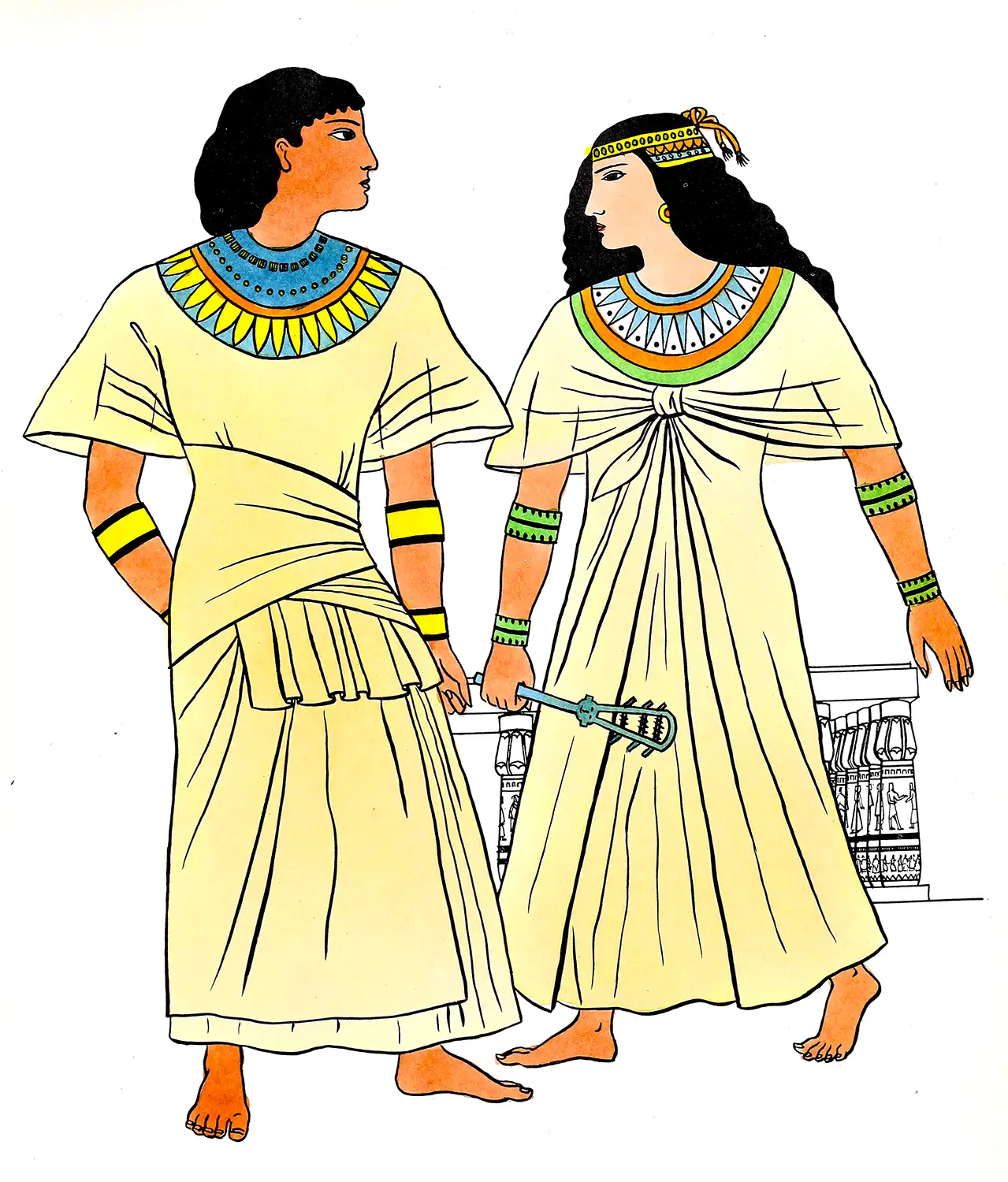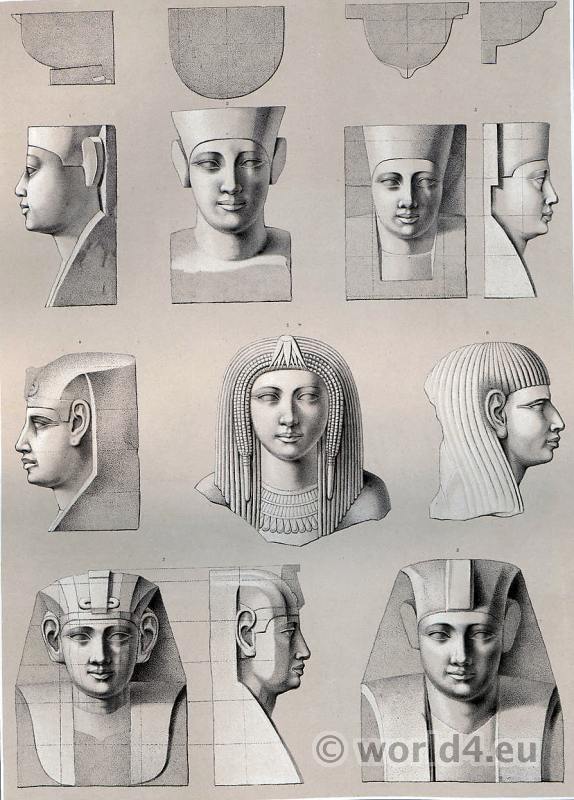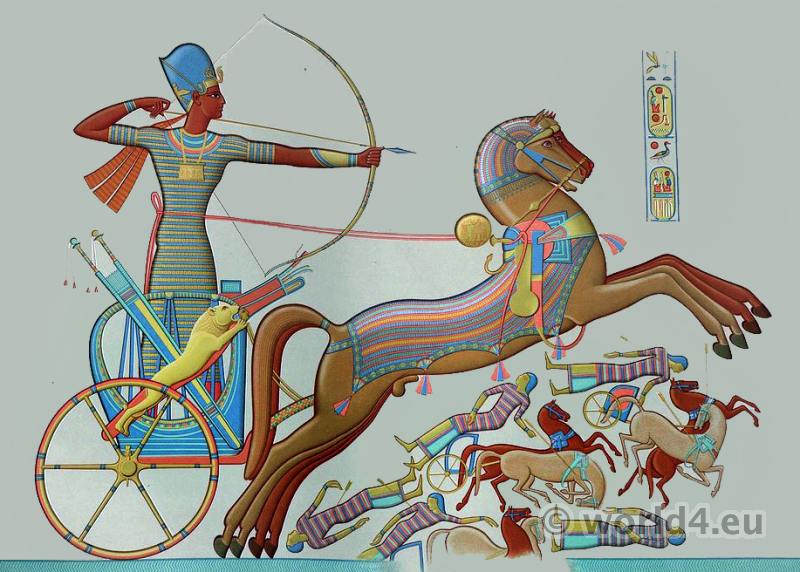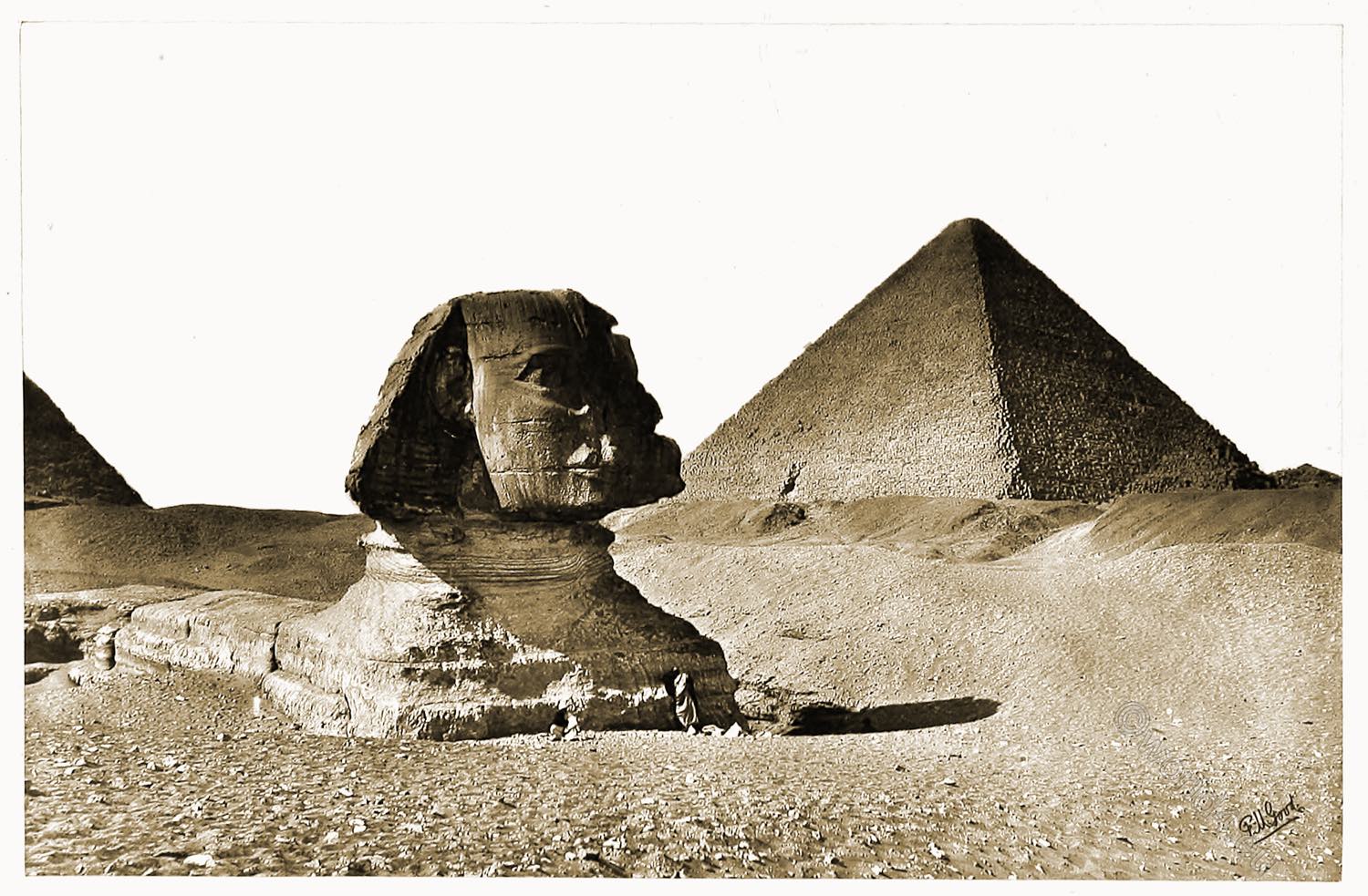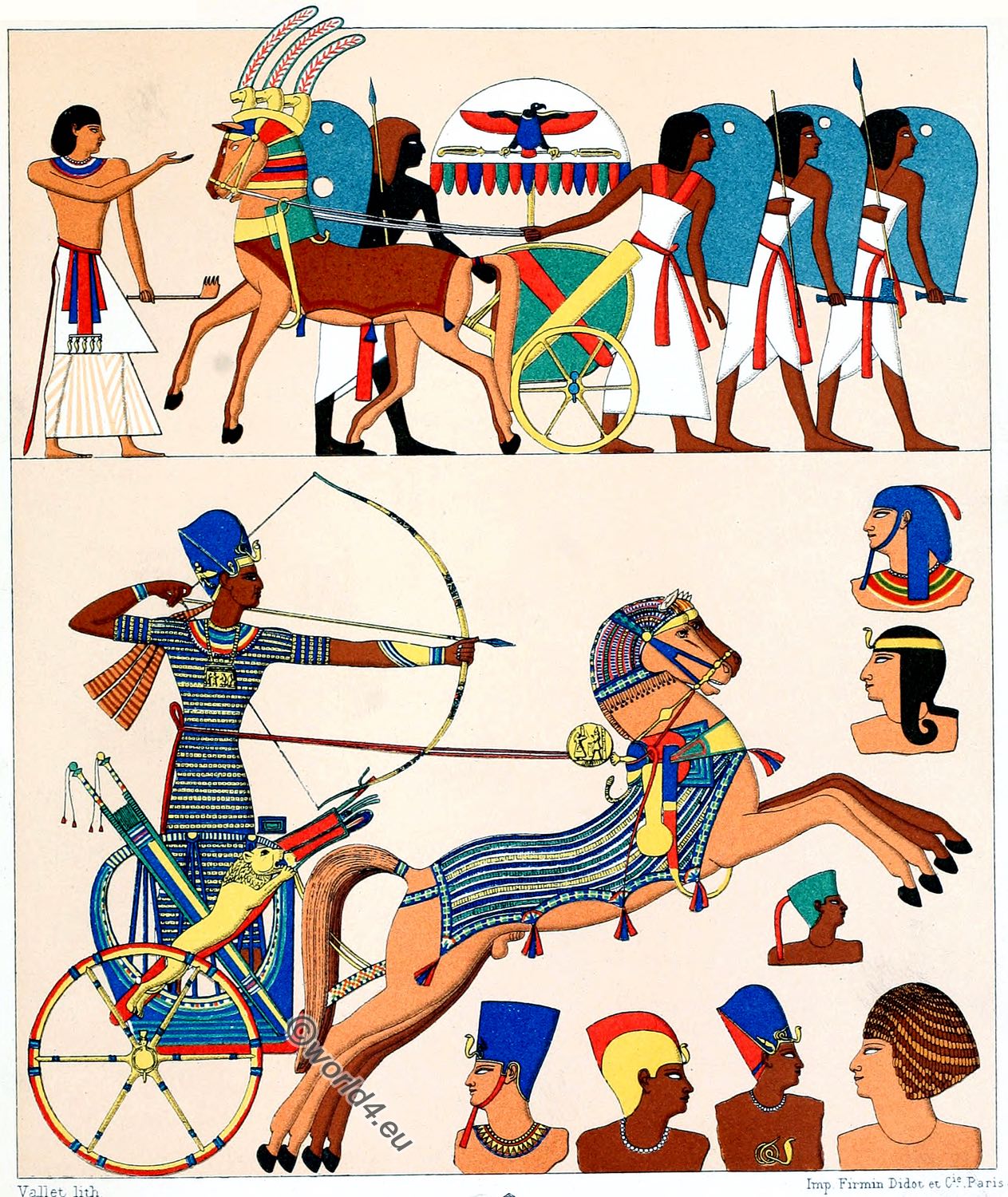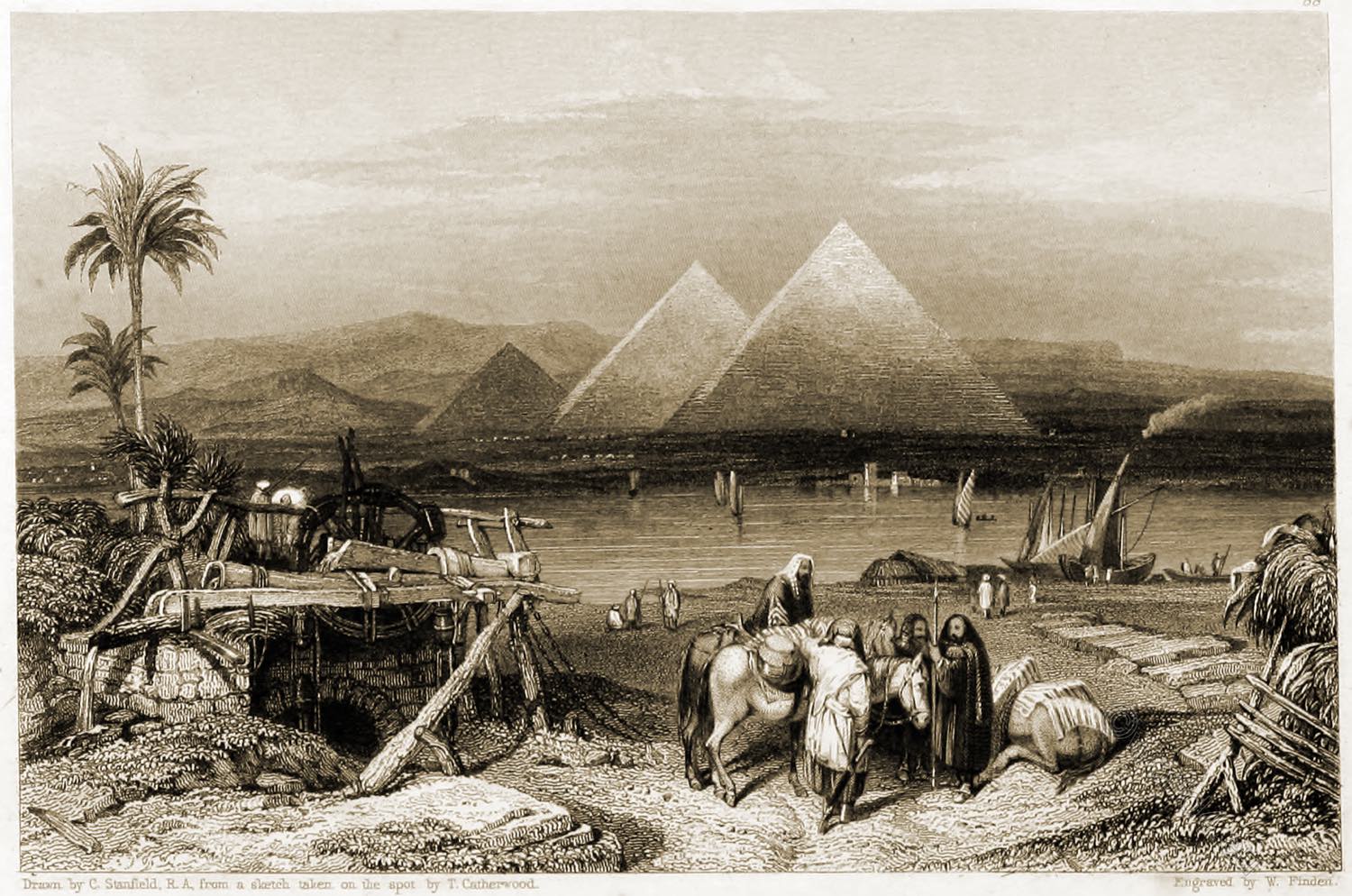PLATE 3
EGYPT.
Egyptian Middle Kingdom.
The Middle Kingdom is the phase of Egyptian history that lies approximately 2040 to 1782 BC (or 1650 BC if we include the 13th dynasty) and corresponds to a revival of the unitary state after the phase of fragmentation of power that followed the collapse of the Old Kingdom. The Middle Kingdom is often referred to as the feudal era. In fact, there is hardly any other period in Egyptian history in which so many monuments can be found even in the most remote provinces. According to the traditional chronology based on Manetho’s work, it comprises two dynasties of rulers: the 11th and 12th.
The history of the 11th dynasty is the story of the struggle of Thebes, and its rulers, to elevate itself from a mere capital of its nomo *) to a dominant city over all of Egypt. With the dissolution of state unity following the end of the Old Kingdom, the rule and title of King of Upper and Lower Egypt passed from Memphis to Heracleopolis.
*) With the term nomo (plural nouns), Greek historians, first and foremost Herodotus, identified the districts into which ancient Egypt was divided. Upper Egypt was divided into 22 districts, while Lower Egypt comprised 20 districts. Greek historians defined the governors of the districts as nomarchs, whether they were officials of royal appointment or rulers with hereditary positions and more or less independent (depending on the period of Egypt’s history) from the central power.
Most usually associated with Ancient Egypt are the Pyramids, the Sphinx, and the Pharaohs, or kings, who built them. Of course, these Pharaohs are important; but it is a mistake to neglect studying all other people of Egypt as, for instance, the masses who contributed the tremendous labor that went into the building of the Pyramids and the Sphinx, the scholars who developed the scripts and writings and were painstaking enough to make the records that enable us to study about them, and the artists who made the paintings and sculptures that we still admire. All these people were certainly as important in Egyptian life as were the upper classes.
Of course, when we study what man wore in the past, we are often limited to what was worn by the rich and the noble, because the poor seldom had a chance to get into a work of art, or even to be mentioned in the written records. This picture, however, is an exception to the rule. It is of a scribe and his wife, and they might be designated as belonging to the selected middle class. You see, learning was more highly regarded by the Egyptians than it is by us; and men who had mastered the arts and sciences were never permitted to suffer from want. In fact, they were held in high regard und the clothes we see here are of rather fine quality. To describe thorn we will start at the head and work downward to the feet. Since both figures are wearing about the same type of dress, we shall describe them together.
The woman is wearing a pretty headband, which we see is tied on with strings that dangle at the back. These, as well as the bracelets and collars, were probably made of brightly painted leather. The collars are not attached to the dress, but put on separately and fastened at the back. Both figures are wearing linen robes, which wore popular in this period. The man wears a sash about the waist to hold the folds of the robe in place, and the woman has draped a thin linen cape over her shoulders.
The manner of draping these robes is rather difficult to explain. The garment itself is quite simple. It was a rectangle of linen about twice as long as the wearer’s height and as wide as the wearer’s measurement from wrist to wrist. A hole was cut in the centre for the head and the sides were sometimes sewn to form a sort of sleeve. After it was put on the shoulders, the fullness of the material was drawn together in the rear forming a cape effect. There it was fastened and the excess was drawn around the right side to the front and made secure. The woman has done the same thing except that the points have been drawn to the front and tied to form the triangular section down the middle. (Inverted Pleat)
Egypt had a lovely climate, so shoes were not often worn. The rich and the noble had some very interesting ones, as we can see on Plate 4, but the scribe was not out of place in his bare feet.
Source: Museum Extension Project. History of Costume.
Continuing
Discover more from World4 Costume Culture History
Subscribe to get the latest posts sent to your email.

